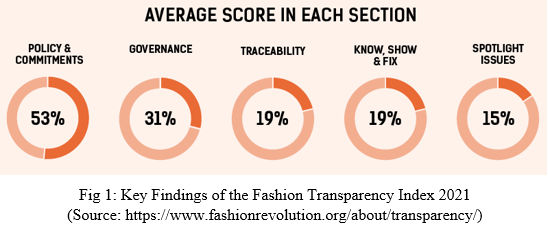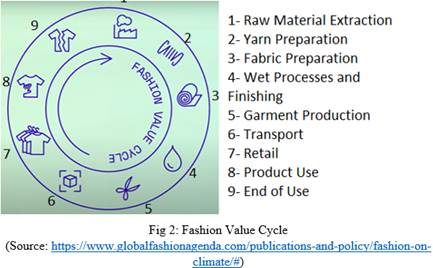“There is no beauty in the finest cloth if it makes hunger and unhappiness.”- Mahatma Gandhi
The retail industry has undergone a paradigm shift due to digital transformations fuelled further due to the pandemic. The increased use of social media and the growth of e-commerce has added to the complexity due to the evolving expectations of conscious consumers and requires consistency around the omnichannel experience. While brands thrive to provide holistic experiences, they pay increased attention to understanding the evolving consumer decision journey and behavioural patterns. Communication across all the touchpoints consistently can pave the way for sustainable retail branding and engage the green consumers favourably.
The recent Conference of the Parties, COP26 held at Glasgow, drew the attention of policymakers in the field of fashion and retail in addressing critical concerns towards climate change with awareness, solutions, and actions. The latest talk of the town is net zero carbon emission which has already got many top retailers across the globe to commit to it by 2050. According to Myclimate, "Net-zero emission signifies that all manufactured greenhouse gas emissions must be removed from the environment through reduction measures, thus reducing the earth's net climate balance, after removal via natural and artificial sink, to zero. This way, the human race would be carbon neutral and global temperature would stabilise." The fashion and apparel retailers have already started formulating strategies around this initiative for their current and future operational plans. They are joined by other players across several industries worldwide in this movement towards a lower-carbon and greener future. Let us look at some of how fashion and apparel brands can differentiate their offerings from the rest of the competitors by treading on the path of net-zero.
1.Understanding and tracking your carbon footprints
To reduce our carbon emissions to net-zero, we must first identify and track our carbon footprint across our value chain. Once we have visibility on our numbers, we can know how our customers perceive this. This plan calls for relentless efforts by the manufacturers, suppliers, and retailers to join hands together in providing reliable data concerning energy consumption, harmful chemicals discharged, water requirements, etc and share this data with all stakeholders for meaningful decision-making. There is a considerable lack of visibility upstream of the value chain, and this is where we need more stern reduction commitments. Research by Fashion Revolution shows that only 17 per cent of brands reveal their annual carbon footprint at the raw material level. This finding implies we require the intervention of the government, too, in terms of some legal compliance for transparency of reliable disclosures by the fashion and apparel retailers. Such disclosures will attract green consumers and drive better engagement with the brand.

2.Understanding our customers’ focus on net-zero
A starting step could be to get a meaningful insight into our customer’s attitude on Net-Zero, their expectations and their perception of the existing brands in the market. A perceptual map may also help. We also need to understand their current stage in the adoption curve of net-zero, i.e, innovator, early adopter, early majority, etc and anticipate their requirements and challenges. Once we have all these data points, we can communicate with accurate answers and proofs and proactively address their concerns. If executed effectively, this can pave the way for a competitive advantage.
3.Advocate Circularity in the value chain
Closing the loop by bringing in circularity rather than linearity in the supply and value chain is the need of the hour. This concept is also in line with the Sustainable Development Goal (SDG) 12- Responsible Consumption and Production, one of the 17 SDG goals established by the United Nations in 2015. The fashion industry comprises a complex network of processes, products and services. Global fashion Agenda and McKinsey and Company defined it as ‘Global Fashion Cycle’ (Fig.1) in their combined project on fashion on climate.

As shown in the picture, all components of this fashion value cycle can significantly reduce the extent of greenhouse emissions. The maximum impetus to reduce harmful emissions lies with the manufacturers who need the support of the brands to pursue the same with full vigour. Brands also need to educate and encourage young consumers like Gen Z to learn the necessary skills to make, repair and reuse their clothes instead of discarding them which ultimately goes into landfill or going for new clothes.
Actions speak louder than words! A brand’s efforts must align with their commitment to the purported cause of reducing wastages across different stages in the value cycle.
4.Shift to renewable sources of energy
In our global pathway to net-zero, we must adopt low carbon energy sources or renewable energy sources like solar, wind or hydro energy to cater to the demand for energy to power our industries and homes. Shifting from electricity to these cleaner and greener forms of energy will reduce the amount of carbon being put into the atmosphere. It requires all of us to mend how we consume energy, the way we move, the food we eat, the way we design our buildings, overall, a transition in our lifestyle. Brands need to educate consumers and their value cycle partners on these attributes and drive change through action for a differentiated positioning.









Comments